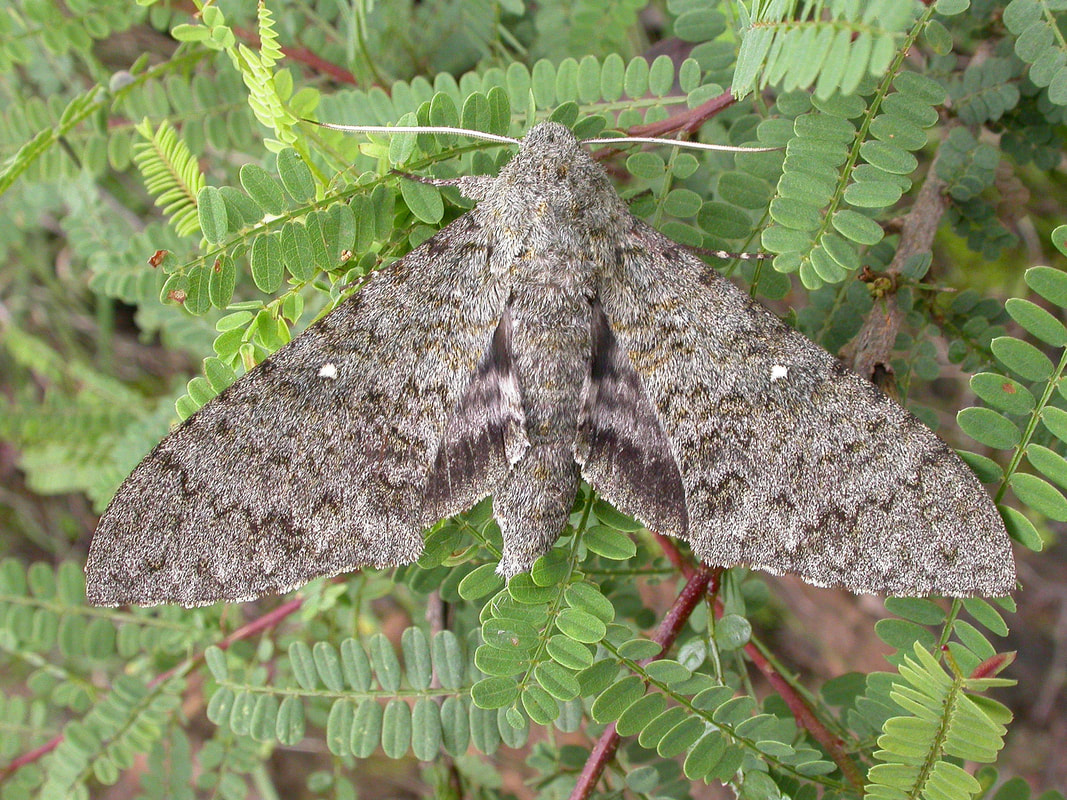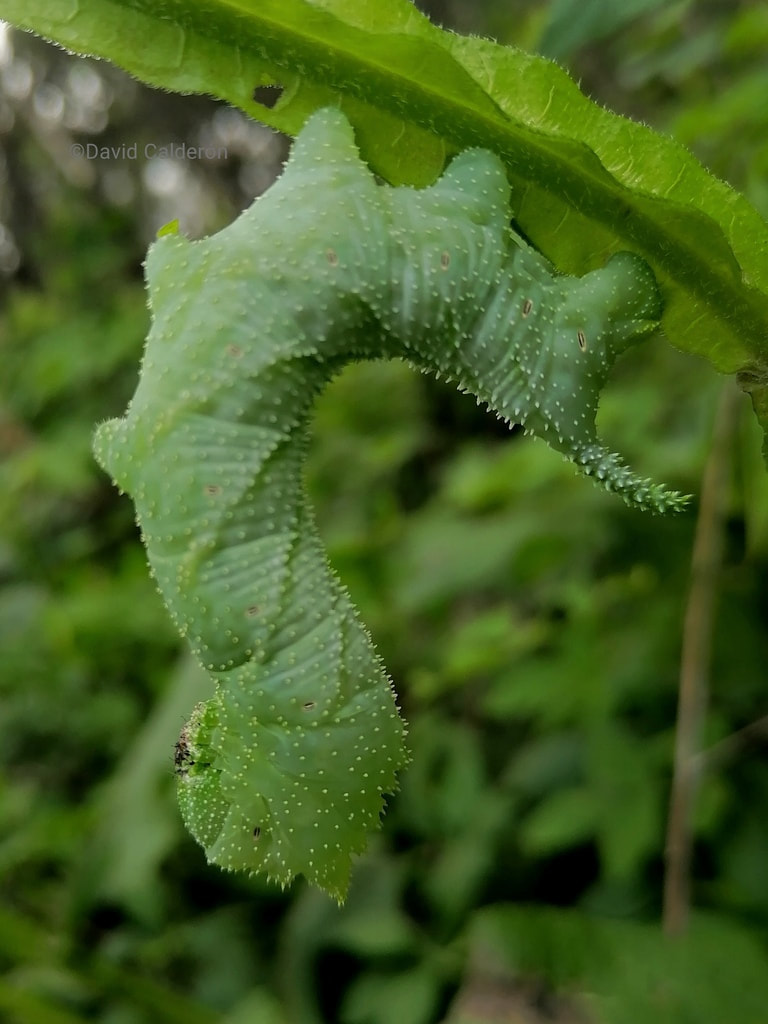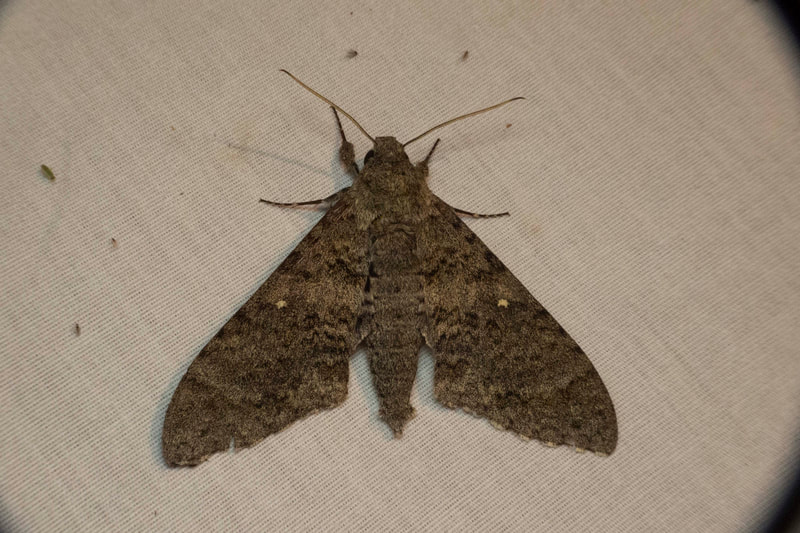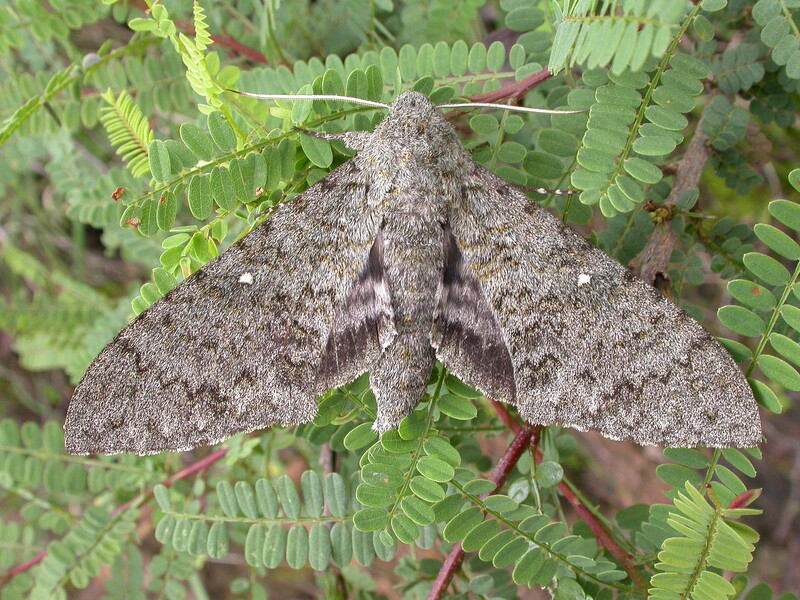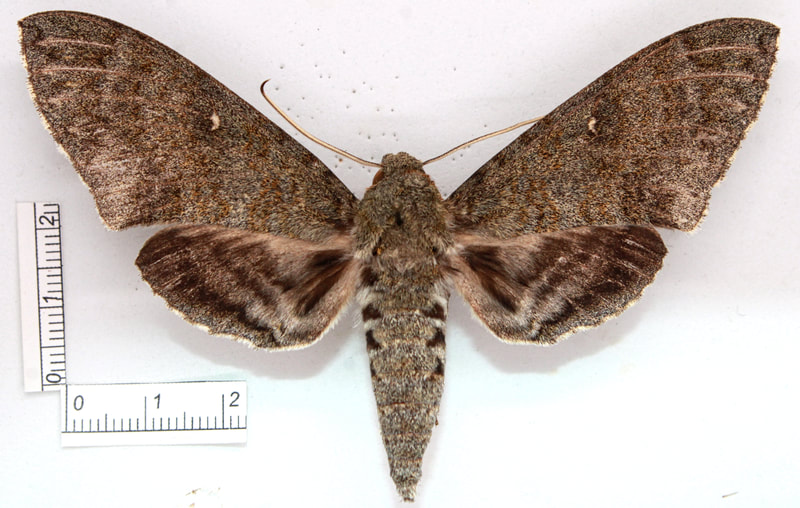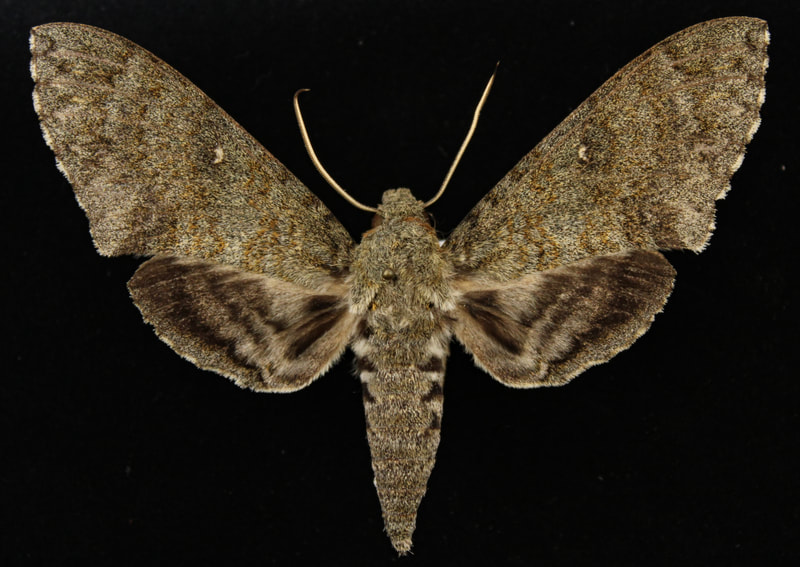|
Common Name: Muscosa Sphinx
Ecology and Life History: This moth is active from July through September in Arizona and New Mexico. This species is highly attracted to light, with both sexes coming to artificial light. Males are far more common at lights. Bait is ineffective at attracting this species. This species is not sexually dimorphic, though males are easy to tell apart from females by the two lobes on the sides of the last abdominal segment. The last abdominal segment is decidedly pointy in males, and blunt/rounded in females. Eggs are laid on the leaves of hostplants. Young larvae feed on the undersides of leaves, hiding along the mid-vein. Larger larvae likely descend the plants to hide during the day. There are reports of late instar larvae feeding during the day (2). Habitat and Searching for Larvae: {COMING SOON} Rearing Notes: {COMING SOON} Host plants: Click here to load this Caspio Cloud Database
Cloud Database by Caspio |
Adult Description: This is a beautiful medium sized green-gray moth with forewings 45-62mm in length (2). The overall appearance is gray, and the lack of any majorly disruptive patterning gives the moth a smooth appearance. There is a white discal spot and some zig-zagging black lines in the discal area. The hindwings are black with two gray lines. The thorax and abdomen are green-gray, and the abdominal segments have black and white checkering on the sides.
Larval Description L5: A beautiful light blue-green larva that is quite granulose in appearance. The entire body is covered in white stippling. There are seven blue and white diagonal lines on the abdominal segments above the spiracles. The spiracles of this species are not easily noticeable, but they are red-orange in color. The most distinctive part of this larva is the triangular shaped bump on the second thoracic segment. This sets it apart from all other Manduca species. The caudal horn is blue and quite granulose. |
The gallery to the left contains photos of Manduca muscosa adults. If you have a photo that you would like to submit to us, please contact us.
The gallery to the right contains photos of Manduca muscosa larval and pupal stages. If you have a photo that you would like to submit to us, please contact us.
The gallery to the right contains photos of Manduca muscosa larval and pupal stages. If you have a photo that you would like to submit to us, please contact us.
